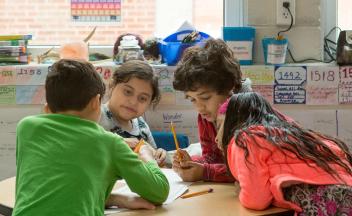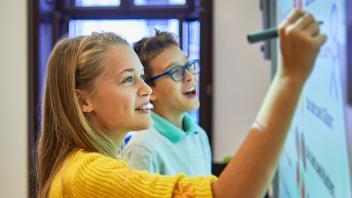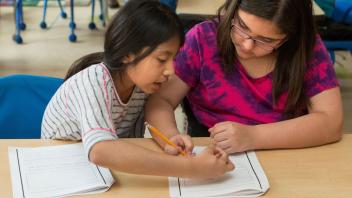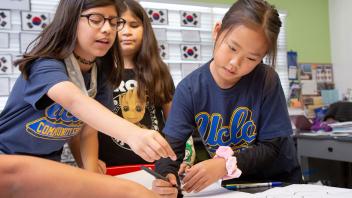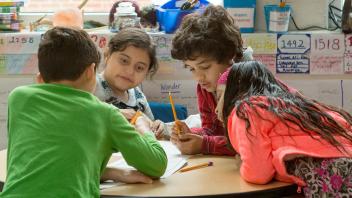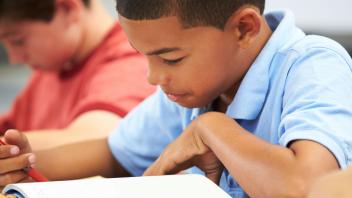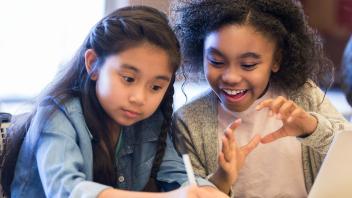Teachers, you are already doing so many things in your classrooms that nurture children’s social-emotional development!
Here are some strategies and techniques you may be using now in your literacy and content area instruction. See how they can support SEL throughout the school day — by emphasizing collaborative work, peer feedback, perspective-taking, self-regulation, and more.
SEL strategies in the classroom
Active listening
Encourage students to actively listen to others by focusing their attention, maintaining eye contact, and demonstrating understanding through verbal and nonverbal cues. This promotes empathy and understanding, allowing students to connect with others on a deeper level.
Making inferences
This strategy involves using what the reader knows about the world and the text to make logical guesses about what is happening or what will happen next. For example, a student might infer that a character is feeling sad based on their facial expression or body language. This strategy can help students develop empathy for others and understand how their own emotions can affect their thoughts and behaviors.
Reflective thinking
Encourage students to reflect on their own emotions, thoughts, and behaviors. Help them make connections between their experiences and the content being discussed, allowing for self-awareness and self-regulation.
Questioning techniques
Teach students to ask open-ended questions that promote critical thinking and understanding. Encourage them to ask questions about others’ perspectives, experiences, and emotions. This helps develop empathy and encourages students to consider different viewpoints.
Collaborative discussions
Provide opportunities for students to engage in small group or whole-class discussions where they can share their thoughts, opinions, and experiences. This allows for active engagement, perspective-taking, and understanding of diverse viewpoints.
Visualization
Use visual aids, such as images, videos, or graphic organizers, to help students visualize and comprehend complex concepts or social situations. Visualization can enhance understanding, empathy, and perspective-taking.
Summarizing and paraphrasing
Encourage students to summarize or paraphrase information in their own words. This helps consolidate understanding and promotes active engagement with the material.
Metacognitive strategies
Teach students to be aware of their own thinking processes. Encourage them to monitor their comprehension, identify areas of difficulty, and employ strategies to overcome challenges. This promotes self-regulation and a growth mindset.
Storytelling
Engage students in storytelling activities that allow them to express their emotions, experiences, and perspectives. Storytelling fosters empathy, perspective-taking, and understanding of others’ emotions and experiences.
Mindfulness
Introduce mindfulness exercises to help students develop present-moment awareness, emotional regulation, and self-reflection. Mindfulness can enhance comprehension by improving focus, attention, and self-awareness.
Personal connections
Help students relate new information to their own lives or real-world situations. This enables them to connect the content to their own experiences, promoting understanding and relevance.
Renée Watson: Ask kids, “what do you see and how does that make you feel”
Video on SEL in the classroom
Classroom strategies from our library
Classroom Strategy
Directed Reading Thinking Activity (DRTA)
Classroom Strategy
List-Group-Label
Classroom Strategy
Listen-Read-Discuss
Classroom Strategy
